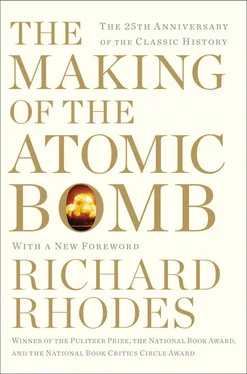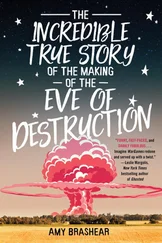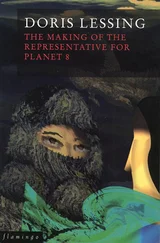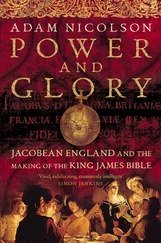The invention of public health in the nineteenth century, and the application of technology to war in the nineteenth and twentieth centuries, inverted that pattern in the industrialized world. Natural violence—epidemic disease—retreated before the preventive methodologies of public health to low and controlled levels. At the same time, man-made death began rapidly and pathologically to increase, reaching horrendous peaks in the twentieth century’s two world wars. Man-made death accounted for not fewer than 200 million human lives in that most violent of all centuries in human history, a number that the Scottish writer Gil Elliot vividly characterizes as a “nation of the dead.”
The epidemic of man-made death collapsed abruptly after the Second World War. Losses dropped precipitously to levels characteristic of the earlier interwar years. Since then, chartered violence has smoldered along, flaring in guerrilla conflicts and conventional wars on the nuclear periphery, accounting for an average of about 1.5 million lives a year—a terrible number, to be sure, but the average before 1945 was fully a million lives higher; and the peak, in 1943, 15 million.
Man-made death became epidemic in the twentieth century because increasingly efficient killing technologies made the extreme exercise of national sovereignty pathological. And it was evidently the discovery of how to release nuclear energy and its application to nuclear weapons that reduced the virulence of the pathogen. In a profound and even a quantifiable sense, the weapons that counseled caution these past seven decades at the level of deep nuclear fear served as containers in which to sequester the deaths they held potential, like a vaccine made from the attenuated pathogen itself. It required three tons of Allied bombs to kill a German citizen during the Second World War. By that quantitative measure, the strategic arsenals of the United States and the Soviet Union at the height of the Cold War held latent some three billion deaths, a number that corresponds closely to a 1984 World Health Organization estimate, arrived at by other means, of potential deaths from a full-scale nuclear war.
Packaging death in the form of nuclear weapons made it visible. The sobering arsenals became memento mori, blunt reminders of our collective mortality. In the confusion of the battlefield, in the air and on the high seas it had been possible before to deny or ignore the terrible cost in lives that the pursuit of absolute sovereignty entails. Nuclear weapons, the ultimate containers of man-made death, made the consequences of sovereign violence starkly obvious for the first time in human history. Since there was no sure defense against such weapons, they also made the consequences certain. A new caste of arms strategists hustled to discover ways to use them, but every strategy foundered on the certain calculus of escalation. “Every great and deep difficulty bears within itself its own solution,” Niels Bohr had counseled the scientists at Los Alamos whose consciences he found stirred when he arrived there in 1943. Nuclear weapons, encapsulating potential human violence at its most indiscriminate extreme, paradoxically demonstrate the reductio ad absurdum of man-made death. The years since 1945 have been a dangerous but unavoidable learning experience. On many more occasions than the Cuban Missile Crisis and the near-debacle of Able Archer 83, I’ve been told, we almost lost our way.
We will confront such risk again, and may we be so lucky the next time, and the next after that. Or perhaps the disaster will break in some other hemisphere and the millions who will die will fall under another flag. It won’t take much to involve the rest of us even at a ten-thousandmile remove. In 2008, some of the scientists who modeled the original 1983 nuclear winter scenario investigated the likely result of a theoretical regional nuclear war between India and Pakistan, a war they postulated to involve only 100 Hiroshima-scale nuclear weapons, yielding a total of only 1.5 megatons—no more than the yield of some single warheads in the U.S. and Russian arsenals. They were shocked to discover that because such an exchange would inevitably be targeted on cities filled with combustible materials, the resulting firestorms would inject massive volumes of black smoke into the upper atmosphere which would spread around the world, cooling the earth long enough and sufficiently to produce worldwide agricultural collapse. Twenty million prompt deaths from blast, fire, and radiation, Alan Robock and Owen Brian Toon projected, and another billion deaths in the months that followed from mass starvation—from a mere 1.5-megaton regional nuclear war.
The 1996 Canberra Commission on the Elimination of Nuclear Weapons identified a fundamental principle that it called the “axiom of proliferation.” In its most succinct form, the axiom of proliferation asserts that As long as any state has nuclear weapons, others will seek to acquire them. A member of the commission, the Australian ambassador-at-large for nuclear disarmament, Richard Butler, told me, “The basic reason for this assertion is that justice, which most human beings interpret essentially as fairness, is demonstrably a concept of the deepest importance to people all over the world. Relating this to the axiom of proliferation, it is manifestly the case that the attempts over the years of those who own nuclear weapons to assert that their security justifies having those nuclear weapons while the security of others does not, has been an abject failure.”
Elaborating before an audience in Sydney in 2002, Butler said, “I have worked on the Nuclear Non-Proliferation Treaty all my adult life…. The problem of nuclear-weapon haves and have-nots is the central, perennial one.” From 1997 to 1999 Butler was the last chairman of UNSCOM, the United Nations commission monitoring the disarming of Iraq. “Amongst my toughest moments in Baghdad,” he said in Sydney, “were when the Iraqis demanded that I explain why they should be hounded for their weapons of mass destruction when, just down the road, Israel was not, even though it was known to possess some 200 nuclear weapons. I confess too,” Butler continued, “that I flinch when I hear American, British, and French fulminations against weapons of mass destruction, ignoring the fact that they are the proud owners of massive quantities of those weapons, unapologetically insisting that they are essential for their national security and will remain so.”
“The principle I would derive from this,” Butler concluded, “is that manifest unfairness, double standards, no matter what power would appear at a given moment to support them, produces a situation that is deeply, inherently, unstable. This is because human beings will not swallow such unfairness. This principle is as certain as the basic laws of physics itself.”
At a later time and place Butler spoke of the particular resistance of Americans to recognizing their double standard. “My attempts to have the Americans enter into discussions about double standards,” he said, “have been an abject failure—even with highly educated and engaged people. I sometimes felt I was speaking to them in Martian, so deep is their inability to understand. What Americans totally fail to understand is that their weapons of mass destruction are just as much a problem as are those of Iraq.” Or of Iran, North Korea—or of any other confirmed or would-be nuclear power.
The Canberra Commission was speaking directly to the original nuclear powers, of course, the five nations whose status as nuclearweapons states had been effectively grandfathered into the 1968 Nuclear Non-Proliferation Treaty. In 2009, in Prague, President Barack Obama offered a chilling corollary to the axiom of proliferation. “Some argue that the spread of these weapons cannot be stopped, cannot be checked,” he said—“that we are destined to live in a world where more nations and more people possess the ultimate tools of destruction. Such fatalism is a deadly adversary, for if we believe that the spread of nuclear weapons is inevitable, then in some way we are admitting to ourselves that the use of nuclear weapons is inevitable.”
Читать дальше












